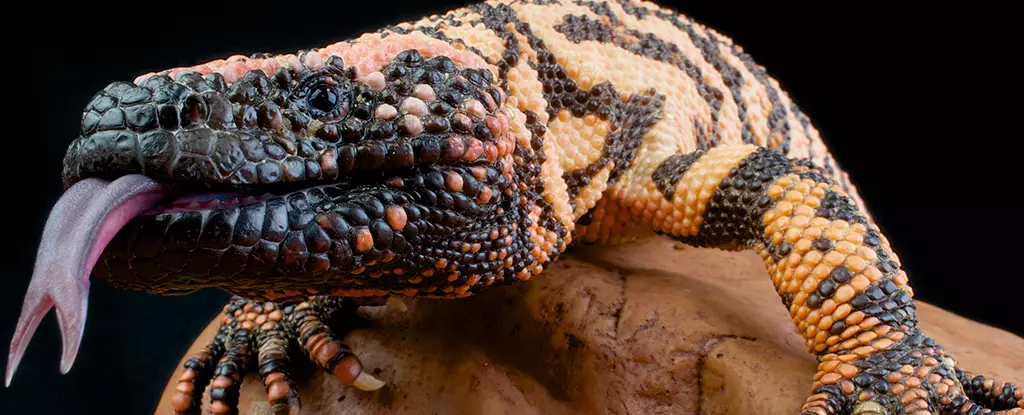The natural world, with its myriad of creatures and their unique biological adaptations, can often provide unexpected solutions to human health challenges. Among these solutions are the fascinating and often dangerous toxins produced by various species, which have led to advancements in modern medicine. This article explores the journey from the venom of a Gila monster to the global impact of GLP-1 agonists and beyond, emphasizing how nature’s hazards can yield invaluable pharmaceuticals.
The Gila monster, a notoriously venomous lizard native to the deserts of the southwestern United States, may seem like an unlikely hero in the realm of diabetes treatment. Its venom harbors a potent cocktail of bioactive compounds, among which one ingredient sparked a revolutionary breakthrough in medical science. In the late 20th century, endocrinologist Daniel Drucker unearthed possibilities within the lizard’s venom that aligned closely with the functioning of human hormones, specifically glucagon-like peptide-1 (GLP-1).
Drucker’s quest was driven by a need for a version of GLP-1 that could resist rapid degradation within the human body while still effectively regulating blood sugar levels and curbing appetite. By diving into research pioneered by scientists such as John Eng and Jean-Pierre Raufman, Drucker’s team was armed with insights into the lizard’s genetic makeup. They focused on Exendin-4, a protein found in the venom, which offered a glimmer of hope for developing long-lasting therapeutic options.
The journey from identifying Exendin-4 to creating a synthetic GLP-1 agonist was not instantaneous. After years of experimentation, the FDA ultimately approved a novel formulation in 2005. The rollout of medications like Ozempic and Wegovy signified more than just another treatment for type 2 diabetes; they opened the door to addressing obesity as a chronic disease, marking a significant paradigm shift in how healthcare providers view weight management.
The newfound capabilities of GLP-1 agonists have elevated them to the forefront of obesity treatments, and ongoing research suggests they may hold potential for treating other metabolic disorders. This dual functionality highlights the remarkable versatility of the compounds birthed from an animal’s defensive mechanism. Moreover, it raises questions about the untapped medical possibilities hidden within other toxins across the animal kingdom.
The Gila monster is not alone in serving as a medical muse. The Brazilian viper, whose venom contains powerful enzyme inhibitors, has inspired the development of Lisinopril, a critical medication for managing hypertension and heart disease. These enzyme inhibitors, which facilitate venom’s deadly spread in prey, have been cleverly repurposed to aid human life instead of ending it.
Moreover, contributions from marine life further illustrate the vast medical potential lying dormant within nature. The Caribbean sponge produces unique nucleosides that have fascinated researchers for years. These compounds have been pivotal in developing cytarabine, an essential chemotherapy agent used to treat various forms of leukemia and lymphoma. This pattern of leveraging animal toxins for therapeutic benefit underscores the resourcefulness of medical science in sourcing innovations from nature.
In the field of oncology, the potential of animal venoms continues to manifest in groundbreaking ways. For instance, oncologist Jim Olson’s search for a method to visualize residual brain tumors led him to explore the venom of the deathstalker scorpion. His team discovered chlorotoxin, a peptide in the venom that selectively binds to cancer cells, allowing surgeons to illuminate and remove tumors with much greater precision. The ensuing development of a near-infrared imaging agent demonstrates how insights from the animal kingdom can illuminate a path through one of medicine’s most dire challenges: cancer.
The ongoing exploration of venoms and toxins reveals untold possibilities in developing future therapies. Each discovery serves as a reminder that nature harbors solutions to human challenges, sometimes in the most unexpected forms. However, the imperative remains: conservation of biodiversity is crucial in preserving these resources for future generations. The juxtaposition of life-saving medicinal advancements against the backdrop of species extinction highlights the interconnectedness of medicine, conservation, and ethics.
As we continue to turn our gaze towards the natural world in search of cures and treatments, we must remain vigilant stewards of the environment. The gifts of the animal kingdom are not just scientific curiosities; they are invaluable resources threaded into the fabric of our health and well-being. Embracing these synergies could pave the way for innovative solutions—if only we dare to explore the depths of nature’s potential.


Leave a Reply